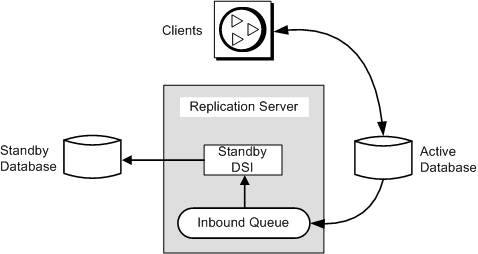Learn the processes involved and the status of the components in a warm standby environment after you switch from the active to the standby database.
After you have switched the roles of the active and standby databases, the replication system will have changed, as shown in this figure:
The previous standby database is the new active database. Client applications will have switched to the new active database.
The previous active database, in this example, becomes the new standby database. Messages for the previous active database are queued for application to the new active database.
Note: After switching, the Replication Agent for the previous active database has shut down, and the Replication Agent for the new active database has started.
